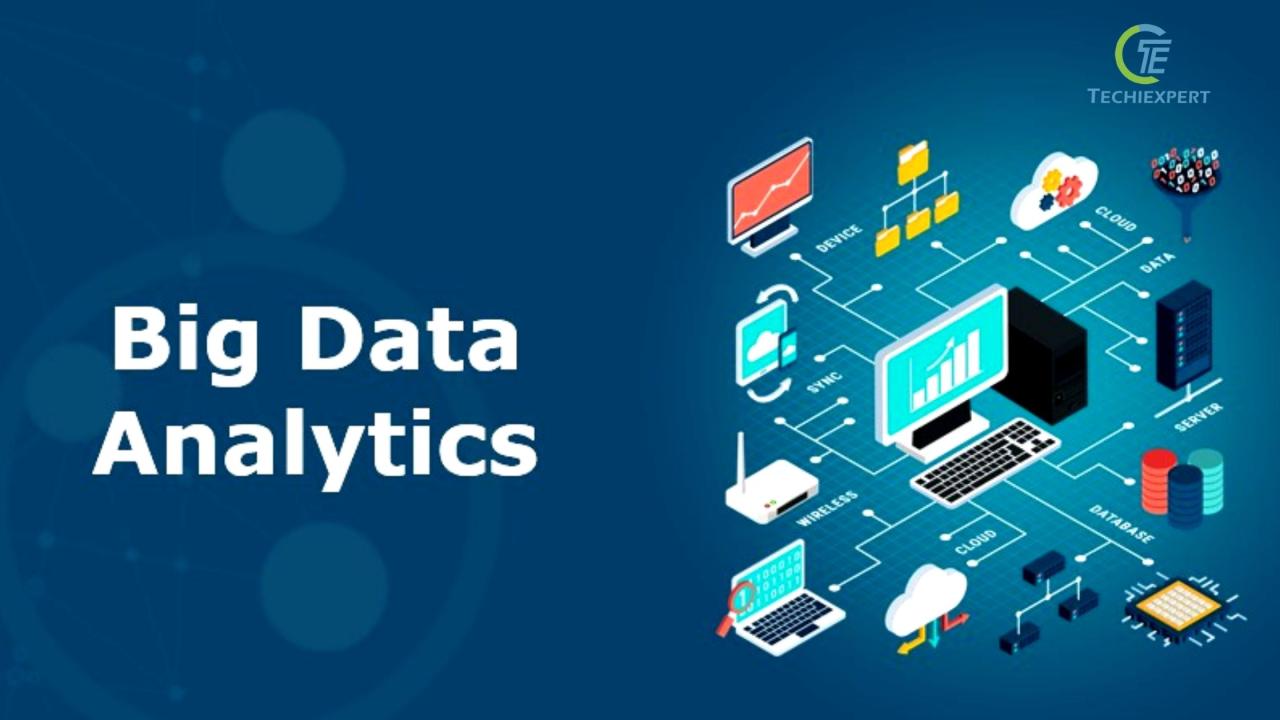
Big Data Analytics: Unlocking the Value of Massive Data
Introduction:
In the modern era, vast amounts of data are generated from diverse sources, creating the phenomenon known as "big data." Big data analytics has emerged as a transformative technology, enabling organizations to extract meaningful insights and patterns from these voluminous data sets.
What is Big Data Analytics?
Big data analytics involves the use of advanced computational techniques and algorithms to analyze large, complex, and diverse data sets that traditional data processing methods cannot effectively handle. It focuses on extracting value from data by uncovering hidden patterns, correlations, and trends.
Characteristics of Big Data:
Big data is often characterized by the following attributes:
- Volume: Massive data sets containing terabytes or petabytes of information.
- Variety: Data originates from multiple sources, including structured (e.g., spreadsheets), unstructured (e.g., text documents), and semi-structured (e.g., JSON).
- Velocity: Data is generated and updated at an unprecedented speed, requiring real-time analysis.
- Veracity: Data quality and reliability can vary, posing challenges for analysis.
Types of Big Data Analytics:
There are three main types of big data analytics:
- Descriptive Analytics: Summarizes historical data to provide insights into past trends.
- Predictive Analytics: Uses machine learning algorithms to predict future outcomes based on historical data.
- Prescriptive Analytics: Offers recommendations for optimal actions based on predictive analytics and optimization techniques.
Benefits of Big Data Analytics:
The benefits of big data analytics extend across various industries and domains:
- Improved Decision-Making: Data-driven insights enhance decision-making by identifying hidden trends and correlations.
- Personalized Customer Experiences: Tailored recommendations, marketing campaigns, and customer support can be tailored based on individual preferences.
- Fraud Detection and Prevention: Anomaly detection algorithms can identify suspicious activities and prevent fraudulent transactions.
- Risk Assessment and Management: Data-driven insights help organizations quantify and mitigate risks in various areas, such as finance and healthcare.
- Operational Efficiency: Process optimization, resource allocation, and supply chain management can be improved through big data analysis.
Challenges in Big Data Analytics:
Despite its immense potential, big data analytics also poses challenges:
- Data Privacy and Security: Large data sets can contain sensitive information, necessitating robust data protection measures.
- Data Integration and Management: Integrating data from multiple sources and ensuring data quality can be complex.
- Computational Resources: Processing massive data sets requires significant computing power and storage capacity.
- Skilled Workforce: Organizations require skilled data scientists and analysts to harness the full potential of big data analytics.
Future of Big Data Analytics:
Big data analytics is rapidly evolving, with advancements in artificial intelligence (AI), machine learning, and data visualization techniques. The future of big data analytics includes:
- Real-Time Analytics: Continuous processing and analysis of data streams for immediate insights.
- Automated Analytics: AI-powered solutions that automate data analysis processes.
- Edge Computing: Analytics performed closer to data sources, reducing latency and improving efficiency.
- Cognitive Analytics: Techniques that combine big data analytics with human cognition and decision-making processes.
Conclusion:
Big data analytics has become an indispensable tool for organizations seeking to extract value from massive data sets. By leveraging its advanced capabilities, organizations can unlock new insights, improve decision-making, and gain a competitive advantage in the data-driven era. As big data analytics continues to evolve, its potential to transform various industries and domains remains boundless.


